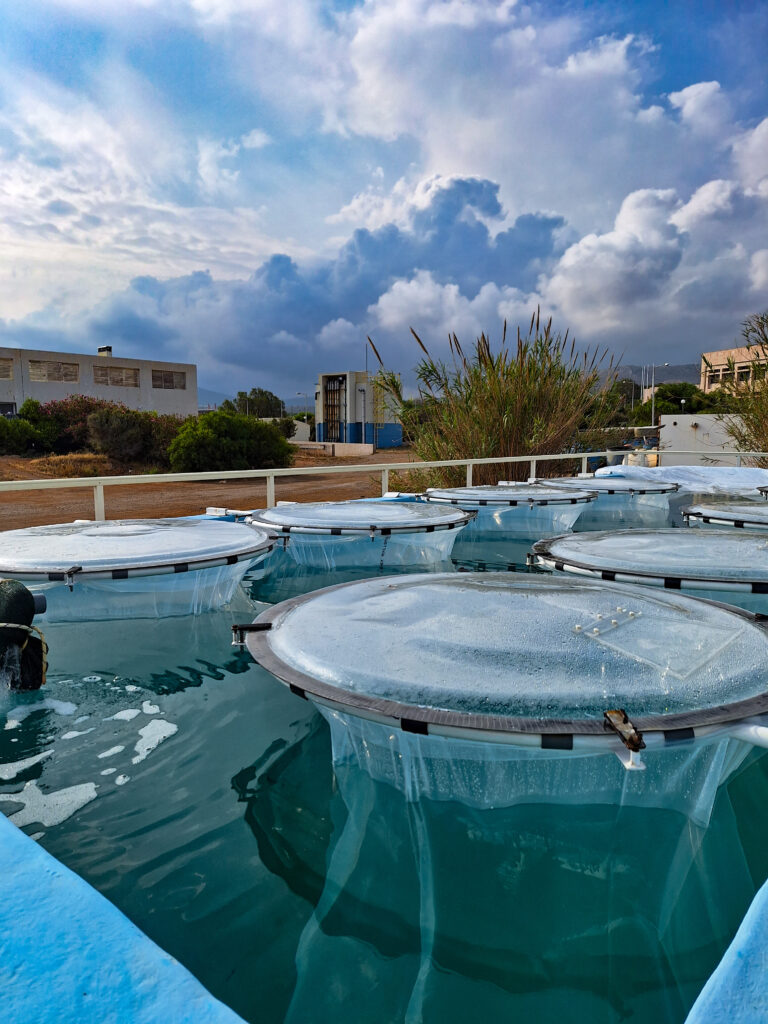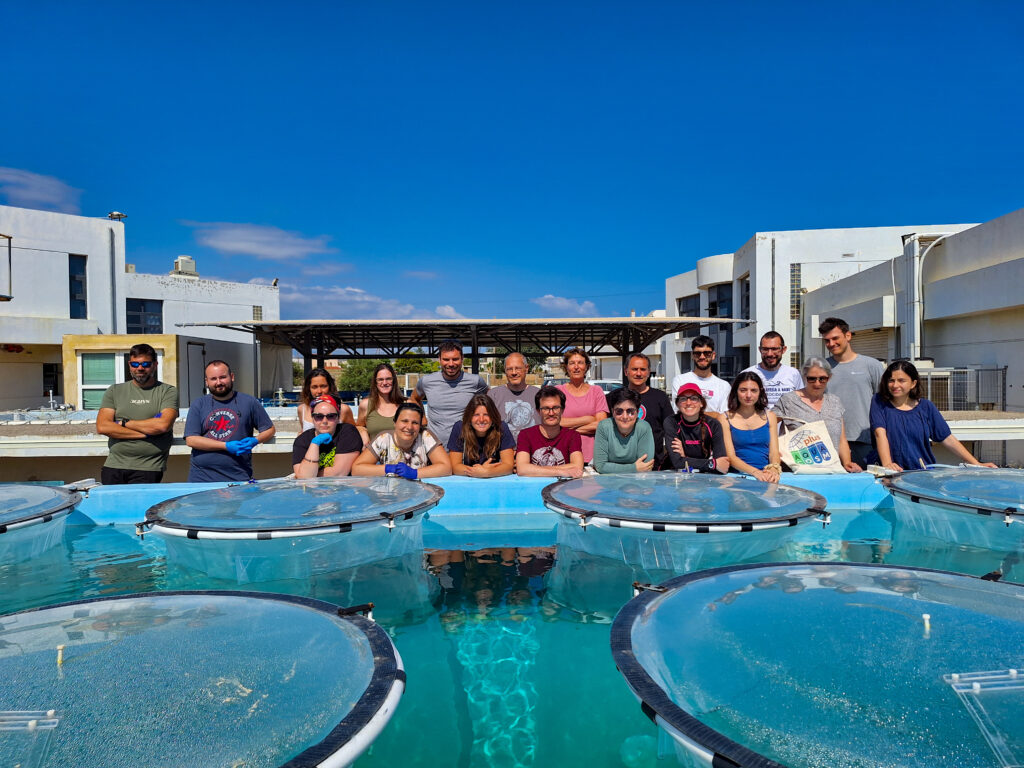A very important contemporary challenge concerns the fight against climate change and the reduction of greenhouse gas emissions. In this search for innovative solutions, an emerging technology is making its way: the storage of CO2 in water. We at Frontiere had the opportunity to interview Professor Piero Macchi, full-time Full Professor of the Department of Chemistry, Materials and Chemical Engineering “Giulio Natta” (CMIC) of the Politecnico di Milano and the CMIC PhD student Selene Varliero, who has carried out a period of research in Crete focused on the study of this technique, to deepen this technology.
We will discover what CO2 storage in water means, how it works and what its advantages and limitations are, exploring the role of the research conducted by Politecnico in contributing to the development of this crucial solution in the fight against climate change.
CO2 storage in water. Professor Macchi, could you briefly explain what it is and why it is important?
PM: The field of CO2 capture and storage in water focuses on reducing greenhouse gas emissions and in particular the possibility of removing CO2 from the atmosphere. This is what we call negative emission. This field is intertwined with industry, as CO2 quotas are traded and represent an economically thriving sector. So, environmental and economic aspects are integrated in an attempt to achieve a double win: making money and benefiting the environment at the same time.
What are the main strategies for storing CO2 in water?
PM: There are several strategies for storing CO2 in water. One possibility is to transform CO2 as plants do through photosynthesis. This can also be done synthetically through chemical processes which involve a chemical reaction to transform molecules. Another strategy is not modifying the CO2 molecule directly but storing it in a form that does not pose dangers, such as turning it into a solid or using chemical fixation. The latter option is more complex, but if you manage to turn CO2 into a solid, you can then achieve long-term storage.

What does storing CO2 in water mean? How does it work?
PM: Water is capable of absorbing a significant amount of CO2, but must be properly prepared to increase its absorption capacity without compromising its pH. Different techniques have been proposed, such as the use of slaked lime (calcium hydroxide) or carbonates, to increase the alkalinity of water and promote the absorption of CO2.
It is important to keep the pH stable to avoid negative consequences on the marine ecosystem. Increasing the pH too much may harm marine species, while a pH that is too low may cause ocean acidification. The aim is therefore to prepare a solution containing calcium bicarbonate, which is a stable form of CO2, and then dilute it in seawater without altering its pH. In this way, CO2 is safely stored in water with no negative impacts on the marine environment.
We conducted tests, including an experiment in La Spezia, to evaluate the effectiveness of this technology. Despite some difficulties during the experiment, it turned out that CO2 is indeed absorbed by water, and stability over time is an important factor to consider. Therefore, our project proposes an innovative method for storing CO2 in water using calcium hydroxide solutions to increase alkalinity without compromising the pH.
What are the main advantages of this technology?
PM: The capture and storage of CO2 in water offers several significant advantages. First of all, water is a globally available resource, which means that there is a strong potential for storing large quantities of CO2. In addition, water can contain a considerable amount of CO2, even more than that normally found in the atmosphere. Thus, by transferring CO2 from the atmosphere to water, we can help reduce CO2 concentrations in the air, thereby mitigating the effects of greenhouse gases.
Another important advantage is that the storage of CO2 in water can take place in a safe and efficient way. Water provides a stable and controllable environment in which CO2 can be retained and stored over the long term. This reduces the risk of CO2 leaking into the atmosphere. In addition, CO2 capture and storage in water can be integrated with other energy solutions. For example, renewable energy sources could be used to power capture processes and to convert CO2 into a form that can be more easily absorbed by water. This synergy between sustainable technologies is a very promising for addressing the climate change challenge.
What are the main challenges or limitations associated with CO2 capture and storage in water?
PM: First, the capture process requires using alkaline substances, which can be expensive and are potentially harmful to the environment if handled incorrectly. It is important to ensure that these substances are used in a safe and responsible manner to avoid negative impacts on the water ecosystem. Moreover, the CO2 storage capacity of water is not limitless. Indeed, there is a limit to the amount of CO2 that can be absorbed and retained in a given amount of water.
Finally, it is important to consider the long-term impacts of storing CO2 in water. Water can provide a relatively stable environment for CO2 capture, but accumulating of large quantities of CO2 can affect the chemical and biological characteristic of water, and this aspect requires monitoring.

Selene Varliero, please describe your research experience and where it took place?
SV: The research was conducted in Crete, at the Hellenic Center for Marine Research (HCMR), as part of a collaborative project with the University of Milano Bicocca (specifically with Professor Daniela Basso), within the framework of the AQUACOSM project.
The experimentation in Crete involved testing the process of ocean liming, which means spreading large quantities of alkaline substances on the sea surface to counteract ocean acidification. The experiments were conducted in mesocosms, facilities that contain about 3m3 of untreated and unfiltered seawater. Mesocosms replicate the marine environment, albeit confined, in a way that can’t be replicate in a laboratory setting. Within these structures, we tested how calcium hydroxide application leads to CO2 absorption and seawater alkalinity increasing. Additionally, we conducted valuable studies on the effects of the process on marine biota. These types of analyses were carried out in collaboration with various research teams, each focusing on different indicators of the marine environment’s well-being.
What were the results obtained?
SV: The main goal of the experimentation was to determine the concentrations of calcium hydroxide that optimize the process without causing unfavorable effects on the marine biota. To find these threshold concentrations, we subjected the system to incremental dosages to identify critical aspects following the alkalization. The experiment has just concluded, but so much data still need to be analyzed and processed. However, preliminary results indicate that we have successfully identified the stress threshold for the system and identified dosages of calcium hydroxide that do not have unfavorable effects on the treated environment.
What role is Politecnico’s research playing in CO2 storage in water?
SV: At Politecnico, we collaborate with several departments involved in the process: the Department of Civil and Environmental Engineering (DICA) and Professor Stefano Caserini, and the Department of Aerospace Science and Technology (DAER), where, in collaboration with Professor Abbà, we study dispersion in the marine environment. Specifically, our CMIC team focuses on analyzing the efficiency of the process.
What do you see as the future of this technology?
SV: I believe that these processes have great potential for CO2 absorption. To reduce carbon dioxide concentrations in the atmosphere, we must first decarbonize our production systems, meaning we must stop emitting CO2. However, according to the Intergovernmental Panel on Climate Change (IPCC), it is also clear that to keep global warming below 2°C, we will need to remove CO2 from the atmosphere as well.
It is now highly likely that there will not be a single technology that can “solve” the problem of climate change. Instead, we will have different negative emission processes to use, depending on the requirements of each process, their side effects, and the specific application site. In this context, ocean liming and limenet processes integrate well with future storage technologies, thanks to their co-benefit of countering ocean acidification.
